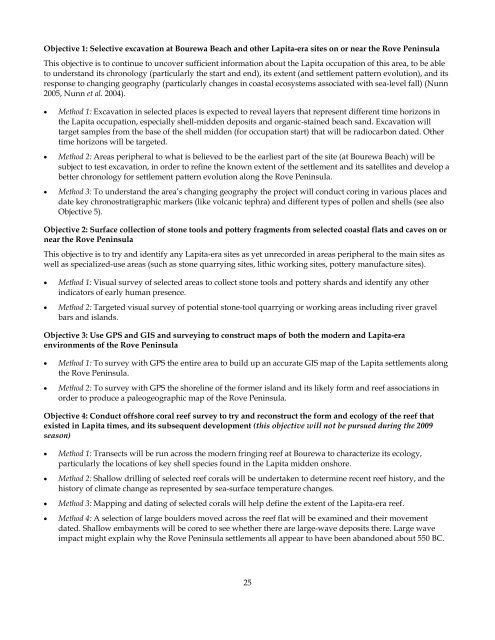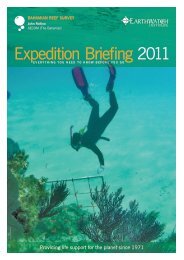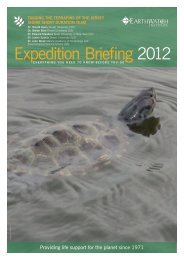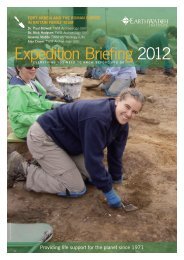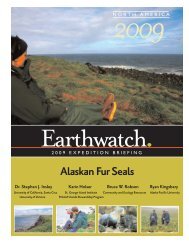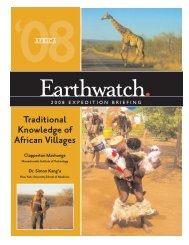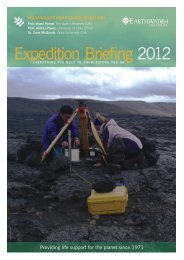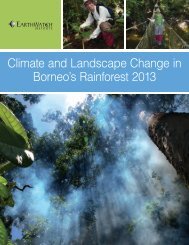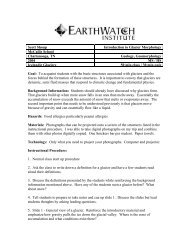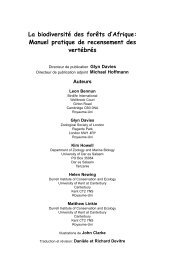Fiji's Ancient Seafarers Dr. Patrick D. Nunn - Earthwatch Institute
Fiji's Ancient Seafarers Dr. Patrick D. Nunn - Earthwatch Institute
Fiji's Ancient Seafarers Dr. Patrick D. Nunn - Earthwatch Institute
You also want an ePaper? Increase the reach of your titles
YUMPU automatically turns print PDFs into web optimized ePapers that Google loves.
Objective 1: Selective excavation at Bourewa Beach and other Lapita-era sites on or near the Rove Peninsula<br />
This objective is to continue to uncover sufficient information about the Lapita occupation of this area, to be able<br />
to understand its chronology (particularly the start and end), its extent (and settlement pattern evolution), and its<br />
response to changing geography (particularly changes in coastal ecosystems associated with sea-level fall) (<strong>Nunn</strong><br />
2005, <strong>Nunn</strong> et al. 2004).<br />
• Method 1: Excavation in selected places is expected to reveal layers that represent different time horizons in<br />
the Lapita occupation, especially shell-midden deposits and organic-stained beach sand. Excavation will<br />
target samples from the base of the shell midden (for occupation start) that will be radiocarbon dated. Other<br />
time horizons will be targeted.<br />
• Method 2: Areas peripheral to what is believed to be the earliest part of the site (at Bourewa Beach) will be<br />
subject to test excavation, in order to refine the known extent of the settlement and its satellites and develop a<br />
better chronology for settlement pattern evolution along the Rove Peninsula.<br />
• Method 3: To understand the area’s changing geography the project will conduct coring in various places and<br />
date key chronostratigraphic markers (like volcanic tephra) and different types of pollen and shells (see also<br />
Objective 5).<br />
Objective 2: Surface collection of stone tools and pottery fragments from selected coastal flats and caves on or<br />
near the Rove Peninsula<br />
This objective is to try and identify any Lapita-era sites as yet unrecorded in areas peripheral to the main sites as<br />
well as specialized-use areas (such as stone quarrying sites, lithic working sites, pottery manufacture sites).<br />
• Method 1: Visual survey of selected areas to collect stone tools and pottery shards and identify any other<br />
indicators of early human presence.<br />
• Method 2: Targeted visual survey of potential stone-tool quarrying or working areas including river gravel<br />
bars and islands.<br />
Objective 3: Use GPS and GIS and surveying to construct maps of both the modern and Lapita-era<br />
environments of the Rove Peninsula<br />
• Method 1: To survey with GPS the entire area to build up an accurate GIS map of the Lapita settlements along<br />
the Rove Peninsula.<br />
• Method 2: To survey with GPS the shoreline of the former island and its likely form and reef associations in<br />
order to produce a paleogeographic map of the Rove Peninsula.<br />
Objective 4: Conduct offshore coral reef survey to try and reconstruct the form and ecology of the reef that<br />
existed in Lapita times, and its subsequent development (this objective will not be pursued during the 2009<br />
season)<br />
• Method 1: Transects will be run across the modern fringing reef at Bourewa to characterize its ecology,<br />
particularly the locations of key shell species found in the Lapita midden onshore.<br />
• Method 2: Shallow drilling of selected reef corals will be undertaken to determine recent reef history, and the<br />
history of climate change as represented by sea-surface temperature changes.<br />
• Method 3: Mapping and dating of selected corals will help define the extent of the Lapita-era reef.<br />
• Method 4: A selection of large boulders moved across the reef flat will be examined and their movement<br />
dated. Shallow embayments will be cored to see whether there are large-wave deposits there. Large wave<br />
impact might explain why the Rove Peninsula settlements all appear to have been abandoned about 550 BC.<br />
25


